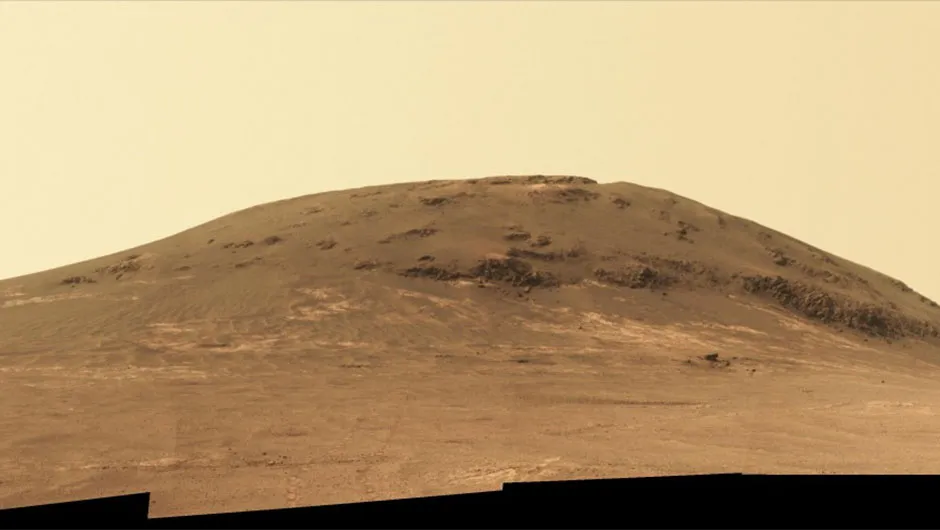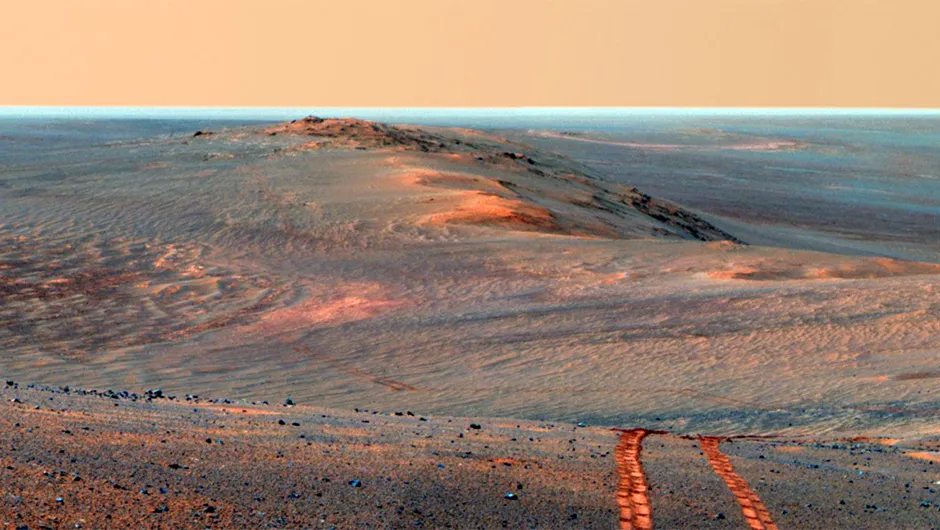NASA's Mars Exploration Rover Opportunity mission has come to an end after 15 years investigating the surface of the Red Planet.
Communications between Earth and the rover broke down in June 2018 when a dust storm covered Mars and left NASA unable to track its location.
After over 1,000 attempts to restore contact, NASA engineers at the Jet Propulsion Laboratory made the decision to announce the end of the mission on 13 February 2019.

They had not received any communication from the solar-powered rover since 10 June 2018.
Opportunity landed on Mars on 24 January 2004 in the Meridiani Planum region, and was only designed to operate for 90 Martian days and travel 1,000 metres in total.
The rover exceeded its life expectancy by 60 times and travelled over 45km by the time it reached its final resting spot in Perseverance Valley.
Its mission on the Red Planet was to explore geological sites, and during operations Opportunity traversed boulders, slopes, crater floors and hills, also investigating former riverbeds that have since dried up.
It was accompanied in its scientific pursuits by a twin rover, Spirit, that landed 20 days earlier in the Gusev Crater on the other side of the Red Planet.
Some of Opportunity rover's biggest achievements:
- Setting a one-day Mars driving record on 20 March 2005 when by travelling220 metres
- Sending back over 217,000 images, including 15 x 360°colour panoramas
- Investigatingthe surfaces of 52 rocks and locating mineral surfaces for analysis
- Finding hematite, a mineral that forms in water, at its landing site
- Discoveringevidence at Endeavour Crater of ancient water similar to the kindfound in a lake on Earth
In all its investigations, the purpose of Opportunity was to search for evidence that will help scientists build a picture of what Mars was like in its past: its climate, the proliferation of ancient water and whether the Red Planet could ever have supported life.
Some hiccups occurred along the way, such as in 2005 when the 174kg rover lost steering in one of its front wheels, or when a stuck heater threatened to limit its power.
On 26 April 2005 Opportunity drove into a ripple-shaped dune, causing it to stop in its tracks, and NASA engineers on Earth didn't manage to free the rover until 4 June 2005.
They were able to direct it to move slowly in increments until it gained enough traction to bypass the obstacle.

Despite the fact that Opportunity's mission has now ended, investigation of the Red Planet continues with missions such as the InSight lander and the upcoming Mars2020 rover.
"From the get-go, Opportunity delivered on our search for evidence regarding water," says Steve Squyres, principal investigator of the rovers' science payload at Cornell University.
"And when you combine the discoveries of Opportunity and Spirit, they showed us that ancient Mars was a very different place from Mars today, which is a cold, dry, desolate world.
"But if you look to its ancient past, you find compelling evidence for liquid water below the surface and liquid water at the surface."
"It is because of trailblazing missions such as Opportunity that there will come a day when our brave astronauts walk on the surface of Mars," says NASA Administrator Jim Bridenstine.
"And when that day arrives, some portion of that first footprint will be owned by the men and women of Opportunity, and a little rover that defied the odds and did so much in the name of exploration."


